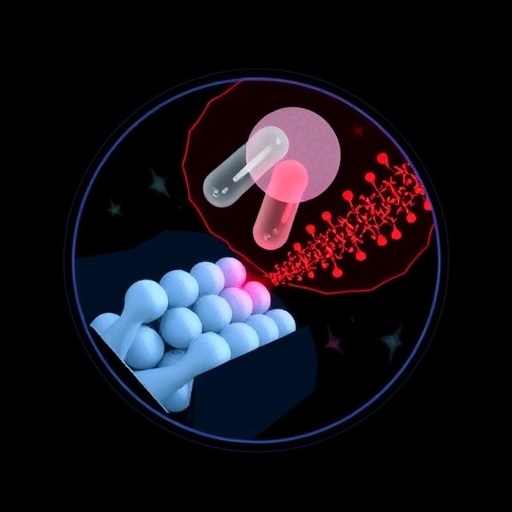Nasopharyngeal carcinoma (NPC) persists as a significant health challenge in various regions of the world, notably where the Epstein–Barr virus (EBV) exhibits a high prevalence. This malignant tumor of the nasopharynx is closely intertwined with EBV infection, which plays a pivotal etiological role in its development. Recent advances have underscored the potential of EBV-related biological markers not only for the early detection of NPC but also for evolving preventive strategies that might transform clinical outcomes. This emerging paradigm leverages both cutting-edge molecular diagnostics and immunological insights to target this disease at its inception and, ultimately, improve population-level control.
At the forefront of NPC detection are plasma EBV DNA assays, utilizing polymerase chain reaction (PCR) technology to identify low levels of viral DNA circulating in the blood. This approach has demonstrated remarkable sensitivity in uncovering NPC cases well before overt clinical symptoms manifest. By capturing the disease at an asymptomatic or early stage, plasma EBV DNA screening holds promise for initiating timely intervention, which can significantly enhance survival rates. The power of this biomarker stems from its direct association with tumor-derived EBV DNA, reflecting the tumor burden and allowing dynamic monitoring.
More recent innovations have focused on a refined analysis of plasma EBV DNA, known as fragmentomics, where the size and fragmentation patterns of viral DNA fragments are studied. This sophisticated technique improves test specificity by distinguishing between EBV DNA fragments emanating from malignant cells versus those released by benign or latent infections. Such discriminative capacity not only reduces false positives but also offers predictive insight by stratifying individuals according to their future NPC risk. The implications of fragmentomic profiling are profound, suggesting that routine EBV DNA screening could evolve into a finely tuned surveillance tool with personalized risk assessment.
In parallel with DNA-based diagnostics, serological screening methods targeting EBV-specific antibodies have been rigorously validated. Initial strategies detected immunoglobulin A (IgA) antibodies against the EBV viral capsid antigen (VCA) and Epstein–Barr nuclear antigen 1 (EBNA1), which formed the cornerstone of NPC screening programs in endemic areas. Large-scale prospective studies have confirmed that these antibody assays can effectively identify individuals at elevated risk for NPC, ultimately correlating with reductions in disease-specific mortality. This serological approach benefits from its relative ease of implementation and has served as a foundation for population-wide screening initiatives.
Further refinement in antibody-based screening emerged with the recognition of anti-BNLF2b antibodies as critical serological markers. Clinical data indicate that detecting these antibodies alone yields higher sensitivity and specificity compared to the previous dual-antibody method. This discovery optimizes the diagnostic algorithm and streamlines the screening process, minimizing unnecessary follow-ups due to false-positive results. The utilization of anti-BNLF2b antibodies presents a crucial advancement in serodiagnostics, enhancing early NPC detection and supporting improved preventative healthcare strategies in high-risk populations.
Economically, rigorous cost-effectiveness analyses advocate for the implementation of EBV DNA and antibody-based NPC screening programs in regions where the disease is endemic. These studies illustrate that early detection facilitated by these biomarkers can reduce the overall economic burden by decreasing treatment costs related to advanced disease stages and minimizing productivity loss. Health policymakers are encouraged to consider integrating these screening modalities within existing healthcare infrastructures to maximize societal benefits and improve clinical outcomes over time.
Looking beyond diagnostics, the horizon now includes the development of prophylactic and therapeutic vaccines against EBV, targeting the root cause of NPC and other EBV-associated malignancies. Vaccine research aims to harness immunological tools to prevent primary EBV infection or modify its oncogenic potential, potentially disrupting the natural history of disease progression. Such vaccines carry the prospect of not only controlling NPC incidence but also significantly reducing the global burden of EBV-related cancers and diseases, marking a transformative leap from treatment to true prevention.
Despite substantial progress, significant challenges remain in optimizing NPC management through EBV-based approaches. For plasma EBV DNA testing, ensuring standardization across laboratories and refining the interpretation of fragmentomics data are critical steps to maximize clinical utility. Antibody-based assays require continual validation across diverse populations and integration with confirmatory diagnostic pathways to prevent missed or delayed diagnoses. Moreover, vaccine development faces hurdles related to antigen selection, immune response durability, and widespread applicability, necessitating sustained investment in research and clinical trials.
The integration of EBV biomarkers into liquid biopsy platforms heralds a promising frontier for NPC screening and may extend to other EBV-associated cancers as well. Insights gained from NPC research provide a valuable framework for liquid biopsy innovations, where minimally invasive blood-based testing can revolutionize early detection and risk stratification across oncology. By exploiting the viral signature within circulating DNA and antibodies, clinicians can envision a future where cancer screening is more accurate, convenient, and personalized, ultimately enhancing patient survival and quality of life.
In the public health domain, the implementation of EBV-based NPC screening programs reflects a model of targeted cancer control in populations with a high prevalence of viral oncogenesis. This approach underlines the importance of epidemiological understanding and molecular technology synergy in disease prevention. Coordinated screening efforts that combine EBV DNA and serological testing, coupled with appropriate confirmatory diagnostics, yield the best prospects for curbing the incidence and mortality of NPC.
The promise of NPC vaccines lies not only in preventing the emergence of this carcinoma but also in reducing the global incidence of EBV-related diseases such as Hodgkin lymphoma and gastric carcinoma. Advances in vaccine platforms—including viral vector vaccines, subunit vaccines, and novel adjuvants—have accelerated preclinical and clinical development pipelines. Immunogenicity studies are underway to identify optimal formulations capable of eliciting robust and durable antiviral immune responses.
To translate these advances from bench to bedside, multidisciplinary collaborations encompassing virology, oncology, epidemiology, and immunology are essential. Governmental and international agencies must also align funding and regulatory frameworks to accelerate the availability of EBV-targeted vaccines and screening technologies, particularly in underserved regions bearing the highest NPC burden.
In conclusion, the convergence of molecular diagnostics, serological biomarkers, and vaccine development crystallizes a comprehensive strategy against nasopharyngeal carcinoma. By exploiting the pathological nexus between EBV infection and NPC carcinogenesis, healthcare systems in endemic regions stand at a transformative juncture where early detection and primary prevention could dramatically alter disease trajectories. This evolving landscape offers hope not only for patients grappling with NPC but also provides an illuminating example of viral oncology’s impact on global cancer control efforts.
Subject of Research: Nasopharyngeal carcinoma and Epstein–Barr virus-based screening and vaccination strategies
Article Title: Achieving control of nasopharyngeal carcinoma: the role of Epstein–Barr virus-based screening and vaccines
Article References:
Lam, W.K.J., Ma, B.B.Y., King, A.D. et al. Achieving control of nasopharyngeal carcinoma: the role of Epstein–Barr virus-based screening and vaccines. Nat Rev Clin Oncol (2025). https://doi.org/10.1038/s41571-025-01079-x
Image Credits: AI Generated
Tags: asymptomatic cancer detectionclinical outcomes in NPC treatmentearly detection of NPCEpstein-Barr virus screeningimmunological strategies for NPCimproving survival rates in NPCmolecular diagnostics in cancerNasopharyngeal carcinoma managementplasma EBV DNA assayspreventive measures for nasopharyngeal carcinomatumor biomarkers in NPCvaccine development for EBV-related cancers





